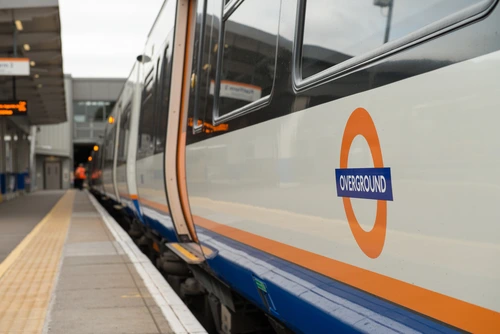
Transport for London (TfL) has set aside money in its 2023–24 budget to explore breaking up the London Overground into different sections, giving them each a new name.

I’ve always been in favour of TfL acknowledging the existence of more lines (my strong belief that the District and Northern lines should be two lines apiece, say), in large part because a metro network with 13 lines sounds cooler than one with 11. There’s a similar impulse at work in my determination that the Overground should be many lines, not one. London is big, and its transport network is one of the best in the world.
There is, believe it or not, an actual practical argument for it too. On several occasions, I have needed to go from east London to north London. There are a number of ways to do this, but not having a death wish I prefer to avoid the Central line at rush hour, so that limits my options.
A map app may suggest I take three different lines. On one route, I could get the Overground from Shoreditch High Street to Highbury & Islington. On the other, I would instead head to Bethnal Green Overground station, get one train to Hackney and then change to another heading west.
To find that out, though, I’d have to click through and frown at some maps and who has the time for that? If each of those lines had a different identity, which could be simply communicated through some combination of logo and colour, then my options would be obvious.
[Read more: The 11 most irritating things about London Overground’s map]
This sort of thing happens a lot. You know you can get the Overground at Whitechapel, and at Gospel Oak, but can you get there directly? No – but you’d need to know the map to get that. Because the different lines that serve those places use the same name and the same colour.
Anyway. Thanks to that logic, you’re now also convinced of the case for breaking the Overground up. The next questions are – how many lines should it be? And what should we call them all?
London Overground: our proposals for better names
The Brunel line – The extended East London line, from Highbury & Islington down to New Cross/Crystal Palace/West Croydon/Clapham Junction. Named after the Victorian engineer who designed the tunnel under the Thames it uses.
The Olympia line – The old North & West London lines, from Stratford to Richmond and Clapham Junction, which serve both Kensington Olympia and the Olympic Park. (Here I originally had the Broadway line – a bit of a reach, based on the fact some of those lines used to run into Broad Street station, and it’s a cool name, and North London Line is misleading and too similar to Northern, but Olympia is better and means we don’t end up with two closely connected lines that both begin with the same letter.)
The Goblin line – The Gospel Oak to Barking line is already known as such to pretty much everyone, and okay the Goblin line means including the “lin” bit twice but what the hell, it’s its name now.
The Harlequin line – Euston to Watford Junction. A name given to the line in the late 20th century, possibly on some kind of Bakerloo model (Harlesden, Queen’s Park), possibly after a shopping centre. Anyway, it’s a cool name and seems worth resurrecting.
The Forest line – London Liverpool Street to Chingford, which is in Waltham Forest and on the edge of Epping Forest.
The Ermine line – London Liverpool Street to Enfield Town/Cheshunt, which roughly follows the Roman road once known as Ermine Street. I toyed with Edmonton, and then settled on Tottenham on the grounds that it’s better known and the line serves several stations in it including the one for the football club’s stadium, but it doesn’t serve Tottenham Hale and someone on Twitter suggested Ermine which is obviously better.
The Emerson line – The Romford-Upminster shuttle only serves one other station, at Emerson Park, so this one is a boring no-brainer.
Now, to send these to TfL.






